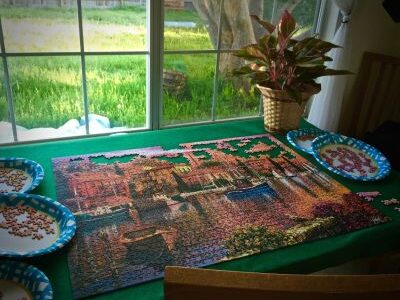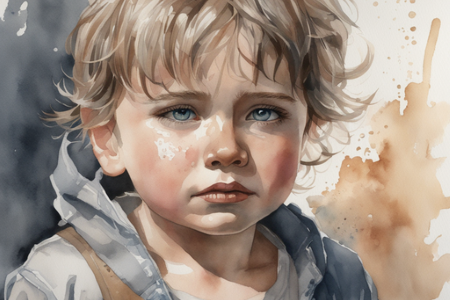In Northern Europe, there is a country that has made a name for itself, especially in the field of education. I can hear you say “Finland.” Indeed, that is the country I am talking about. When it comes to Finland, education is likely the first thing that comes to mind.
What kind of education system is there that would lead to such recognition? Is this system truly so good as to make its name known?
Shall we embark on a small journey to find answers to these questions? A journey where we delve into the depths of Finland’s education system…
Children start their formal education at the age of seven. Preschool education includes nursery and kindergarten.
At the age of seven, education called basic education begins with the first grade and continues until the ninth grade. This basic education is divided into two: primary school and lower secondary school. Grades 1–6 are known as primary school, and grades 7–9 are known as lower secondary school.[1]
Learning takes place through games and activities in kindergarten. Similarly, this learning technique continues in primary school. In primary school, students typically spend their six years with the same teacher, allowing the teacher to get to know the student better and aim to provide them with the most suitable education. In order to maintain order in the class and assist struggling children, there are assistant teachers in basic education, especially in primary school.[2]
Another good aspect is providing education tailored to the characteristics and temperaments of the children. Special classes and teachers are available for children who learn with different techniques or face difficulties in certain subjects. The curriculum and how the education will be received can be adjusted based on the student.
School hours may vary during the week for going to and from school. The number of lessons is less and the duration is shorter in primary school, but the number of lessons increases a bit in lower secondary school.
The Finnish education system is not teacher-centered; playing, experiencing, and project work take the forefront. Handicrafts and home economics classes are also available in Finland. The reason for this is to prepare children for life in every aspect. In this way, children become capable of managing their own tasks. Handicrafts class is divided into two parts: courses using hard and soft materials. In the hard materials course, children develop their carpentry skills. For example, in primary school, they can make a spoon or a napkin holder by carving wood. In lower secondary school, they can make cabinets or even larger items. In the soft materials course, while basic steps are initially learned, the aim is to develop skills such as using a sewing machine and knitting as they grow. They become capable of sewing clothes like dresses, shirts, and pants for themselves.
Physical education classes include activities that help develop swimming, ice skating, skiing, or directional skills. Activities can take place in sports fields, swimming pools, and forests, as there are many of these in Finland. Additionally, most schools have their own sports fields. During the education given to improve orientation skills, students go to a nearby forest and try to find the flags shown on the map. This way, they learn how to read and use a map.
Another surprising fact is that going outside during breaks is mandatory in primary school. It doesn’t matter if the weather is in the -20s! If there’s no valid excuse, going outside is necessary. This way, the goal is for students to get fresh air, play outside, and stay active. Similarly, in kindergarten, children are taken outside almost every day to play and get fresh air.
Education is completely free, and school lunches are provided for free as well. There is almost no need to spend money for school. Pens, notebooks, and books are provided by the school. If your school is far from your home, even your transportation costs are covered.
Language skills are important, so in the fourth grade, elective languages such as French, Spanish, Swedish, and German can be chosen. Swedish starts as a mandatory course in the sixth grade because it is the second official language.[3] Class hours can vary from one school to another. For example, a class hour in one lower secondary school could be 90 minutes, while in another, it could be 45 minutes. In primary school, there are designated classrooms for students, but in lower secondary school, teachers or lessons have separate classrooms, and students go to the classroom for that particular lesson. Let’s not forget to mention that subjects like biology, geography, physics, and chemistry start to be taught in lower secondary school.
The way subjects are taught in Finland is slightly different. For instance, if you take physics in one term, you will study chemistry in the next term. If you take biology in one term, you will take geography in the next term. This way, students don’t have to take too many subjects all at once. The aim is to teach them by making them love the subject and not overburden them with homework.
Another interesting fact is that it’s not strange to address teachers by their first name, and many students do so. Some say “Teacher” while others say “Arja.”
The influence of technology is also felt in education. Even in primary school, children sometimes do their homework using a laptop or tablet. When transitioning to lower secondary school, lessons progress more intensively using computers. In most schools, each student has their own computer and can take it home when needed.
The goal in schools is to make students feel at home. That’s why in primary schools and lower secondary schools, students wear things like socks or slippers that they find comfortable. Similarly, schools have comfortable chairs, resting areas, and play areas. The schoolyards are generally not fenced with wires or walls because it is desired for the child to see it as their home and come to it lovingly.
Their aim is to raise children to be free-thinking and open-minded, not afraid to make mistakes.
As esteemed Fethullah Gülen Hodjaefendi emphasized, love comes before knowledge.[4] Their priority is to make students love school, lessons, and learning. In a manner consistent with the Sunnah of our Prophet, peace and blessings be upon him, education is provided with kindness, love, and tolerance. In fact, if we live like the Pride of the Universe and implement his Sunnah in our lives, who knows how much we will progress and improve.
[1] “Fin Eğitim Sistem”, www.infofinland.fi/tr/education/the-finnish-education-system#heading-a5cbbae0-dd08-4540-a248-a6920cdae6dc
[2] duunitori.fi/ammattiopas/opetusala/koulunkaynninohjaaja
[3] www.iltalehti.fi/uutiset/a/2016080822036514
[4] M. Fethullah Gülen, “Ruhumuzun Heykelini İkame Ederken”, Yeni Ümit, January-March 1994, 3/23.




